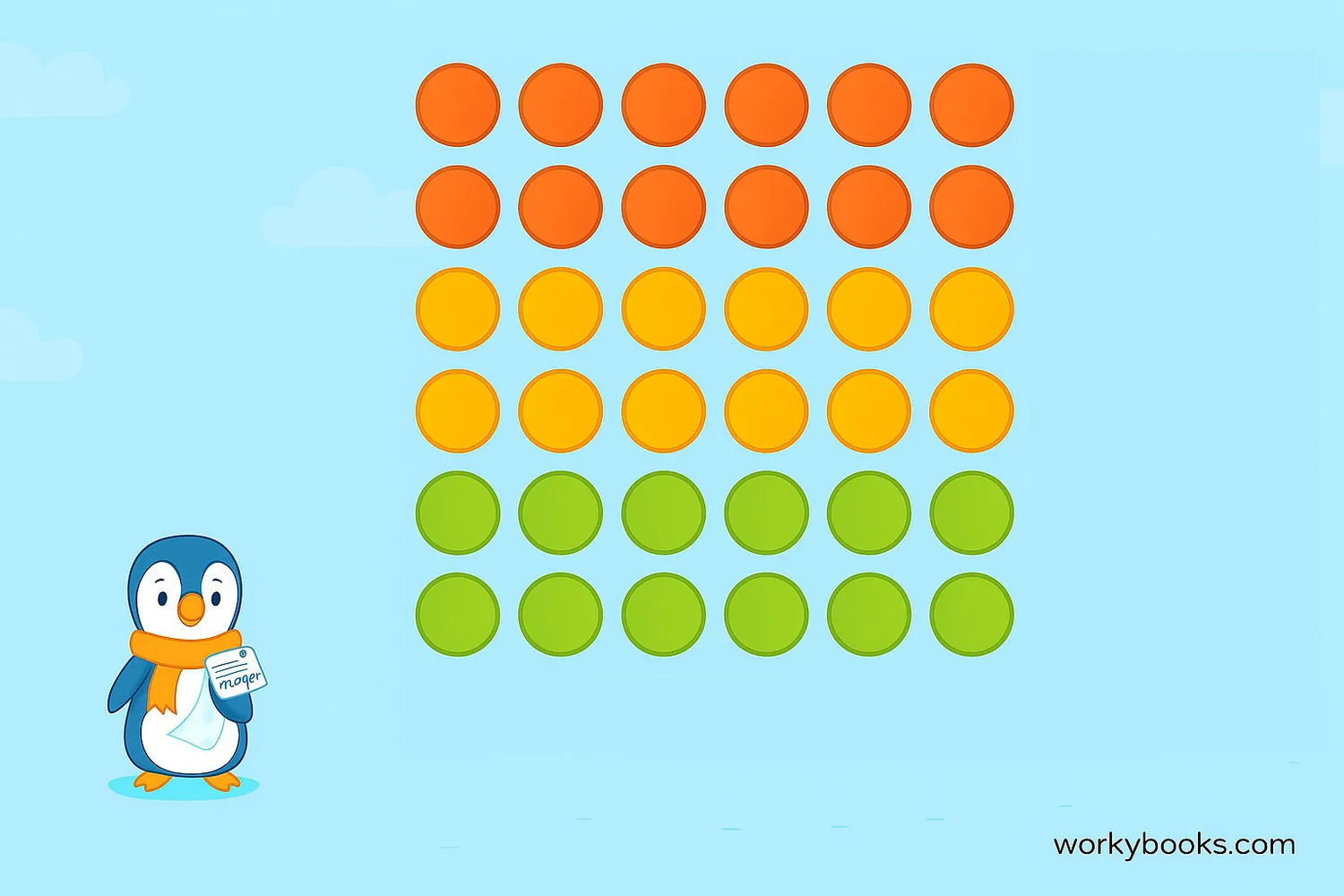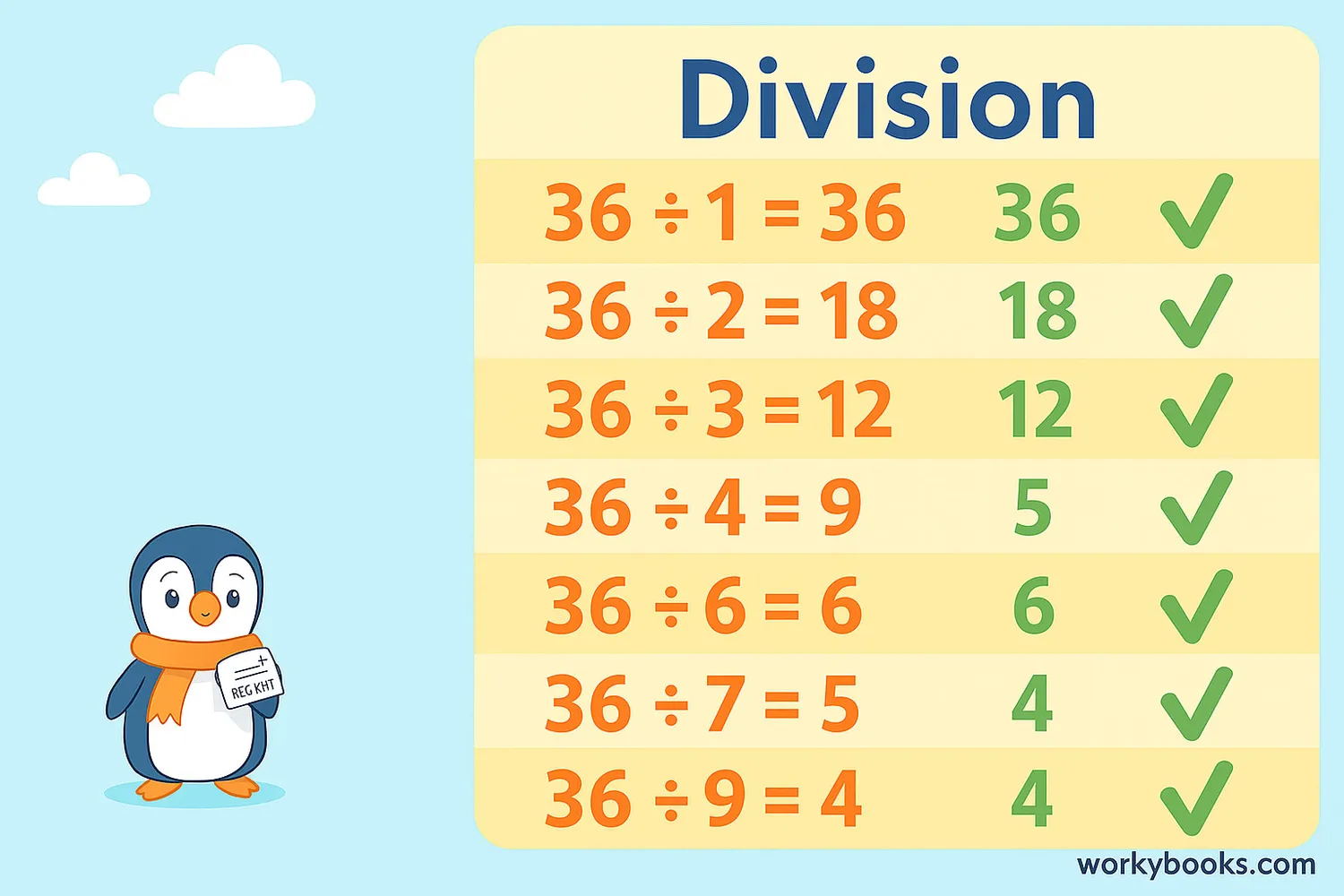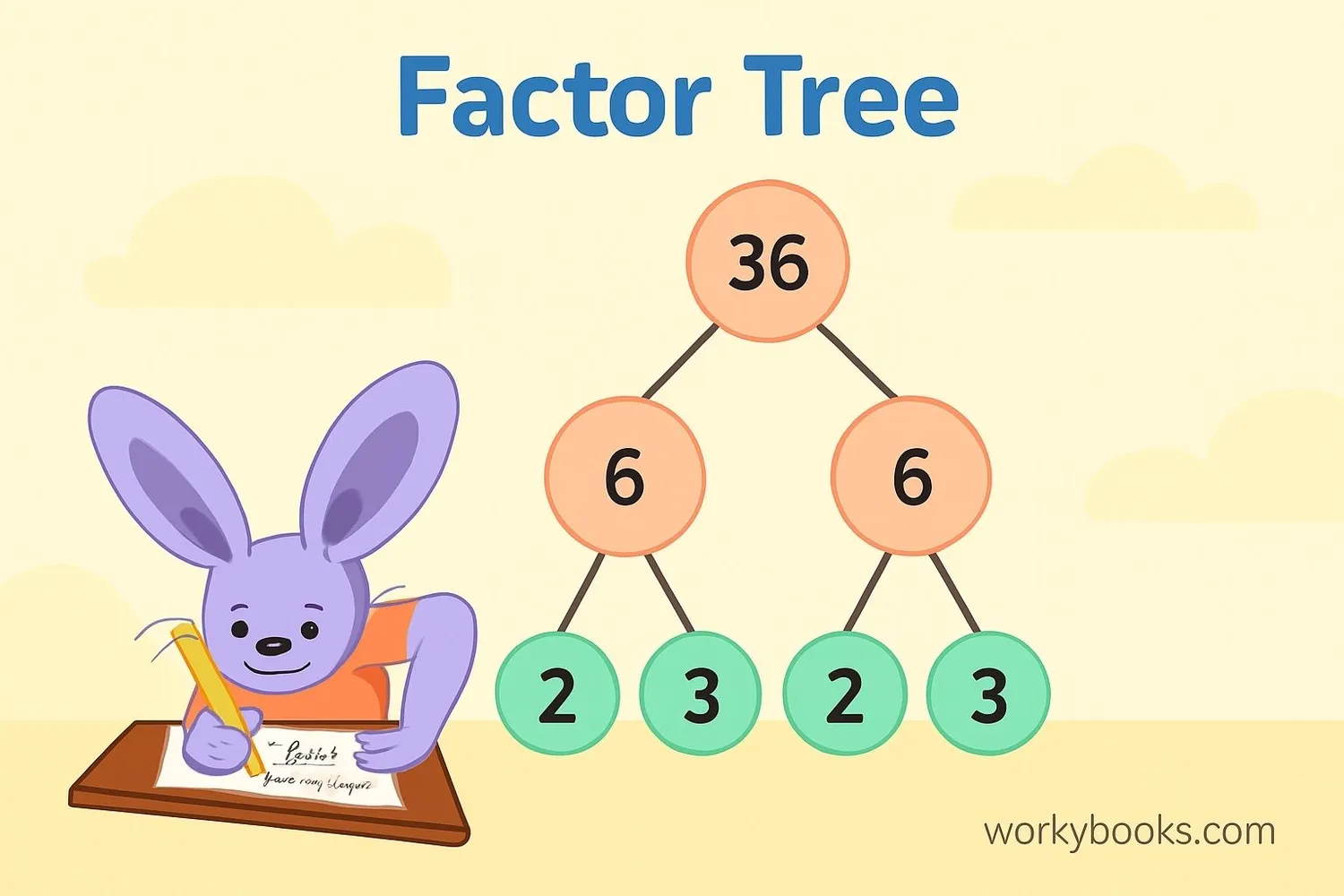Factors of 36 - Definition, Examples, Quiz, FAQ, Trivia
Learn about factors with simple explanations, examples, and interactive activities
What are Factors?

Factors are numbers that divide exactly into another number without leaving a remainder. For example, the factors of 36 are the numbers that can divide 36 evenly.
Think of factors as the numbers you multiply together to get the original number. For 36, we can find factor pairs like:
1 × 36 = 36
2 × 18 = 36
3 × 12 = 36
4 × 9 = 36
6 × 6 = 36
So the factors of 36 are: 1, 2, 3, 4, 6, 9, 12, 18, and 36.
Key Concept
A factor is a whole number that divides exactly into another number with no remainder.
How to Find Factors of 36

You can find all factors of 36 by checking which numbers divide 36 exactly. Here's how:
Step 1: Start with 1. 36 ÷ 1 = 36 (so 1 and 36 are factors)
Step 2: Try 2. 36 ÷ 2 = 18 (so 2 and 18 are factors)
Step 3: Try 3. 36 ÷ 3 = 12 (so 3 and 12 are factors)
Step 4: Try 4. 36 ÷ 4 = 9 (so 4 and 9 are factors)
Step 5: Try 5. 36 ÷ 5 = 7.2 (not whole, so not a factor)
Step 6: Try 6. 36 ÷ 6 = 6 (so 6 is a factor)
Step 7: Continue until you reach the square root of 36 (which is 6)
The factors of 36 are: 1, 2, 3, 4, 6, 9, 12, 18, 36
Remember
Every number has at least two factors: 1 and itself. 36 is a composite number because it has more than two factors.
Prime Factorization of 36

Prime factorization means breaking down a number into its prime number factors. Prime numbers are numbers greater than 1 that have no factors other than 1 and themselves.
Let's find the prime factors of 36:
Method 1: Factor Tree
Method 2: Division Method
36 ÷ 2 = 18
18 ÷ 2 = 9
9 ÷ 3 = 3
3 ÷ 3 = 1
So prime factors are 2 × 2 × 3 × 3 = 2² × 3²
Prime Factorization
Factor Pairs of 36
Factor pairs are two numbers that, when multiplied together, give the original number. For 36, we have both positive and negative factor pairs.
Positive Factor Pairs:
Negative Factor Pairs: Factors can also be negative because multiplying two negatives gives a positive.
Remember
All factors of 36: ±1, ±2, ±3, ±4, ±6, ±9, ±12, ±18, ±36
Factors Practice Quiz
Test your understanding with this 5-question quiz. Choose the correct answer for each question.
Frequently Asked Questions
Here are answers to common questions about factors of 36:
Math Trivia
Discover interesting facts about numbers and factors:
The Number 36
36 is the smallest number with exactly 9 factors. It's also a square number (6×6) and a triangular number (sum of numbers 1 to 8).
Perfect Numbers
A perfect number equals the sum of its proper divisors. 6 is perfect (1+2+3=6), 28 is perfect (1+2+4+7+14=28). 36 is not perfect but is abundant (sum of factors > 36).
Prime Numbers
Prime numbers are the building blocks of all numbers. There are infinitely many prime numbers, but they become less frequent as numbers get larger.
Largest Known Prime
The largest known prime number as of 2023 has 24,862,048 digits! It's written as 282,589,933 − 1 and was discovered by Patrick Laroche.





